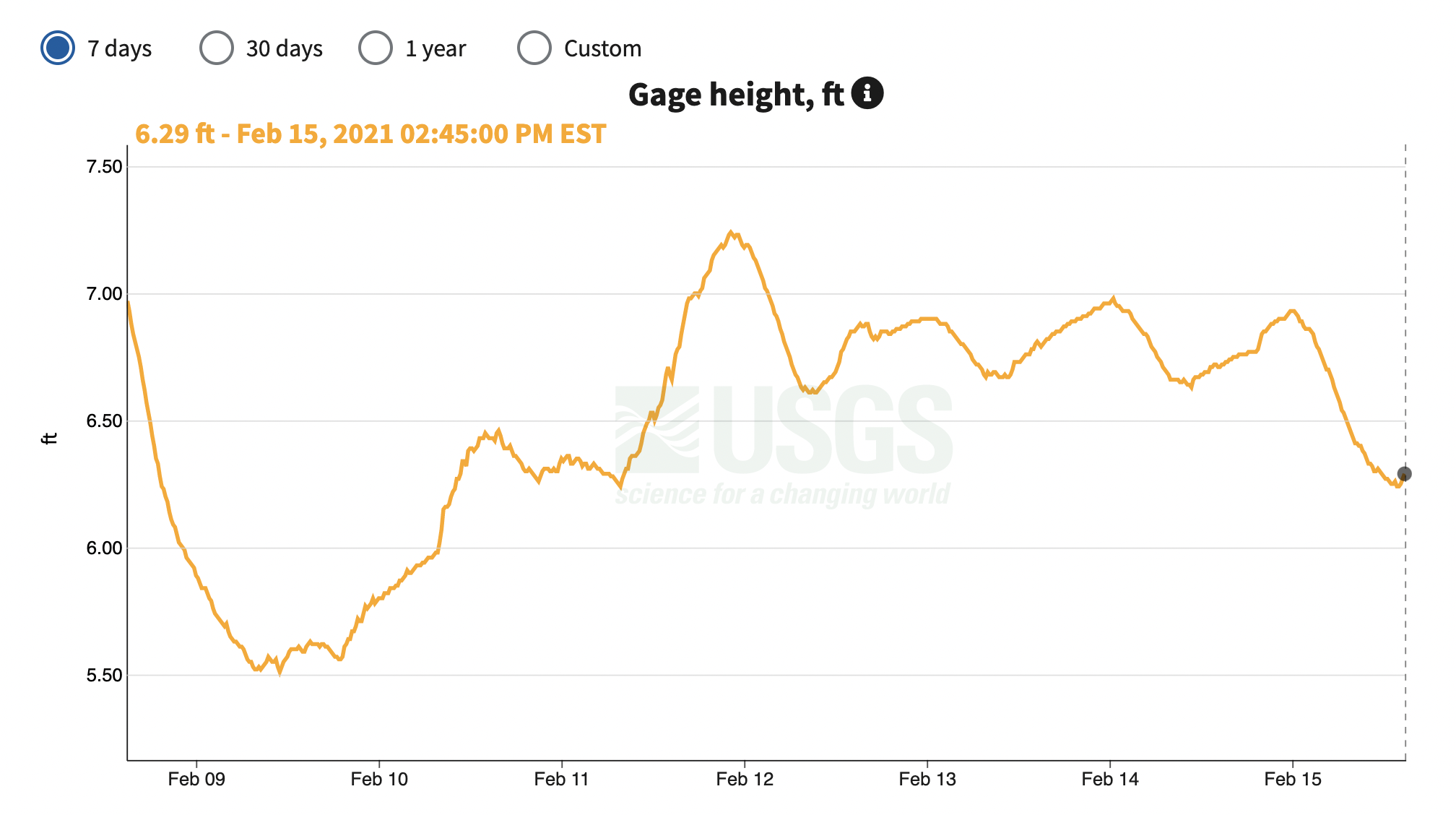That’s a lot of water!
Goodness! We had a lot of rain in 2020.
Photo courtesy Jeff Guenther.
The Chattanooga area received more than 26 inches of rain above our normal value of 51 inches annually. Quite a bit more than Seattle, WA which annually receives about 38 inches.
But that extra rainfall can have various impacts on our environment. If an area like Reflection Riding Arboretum and Nature Center is covered with thick, healthy vegetation, the rainfall gradually seeps into the soil and will eventually replenish the underground water holding areas (aquifers), which release water over time to help the plants above. Without our trees, grasses, and other plants, the water would quickly run off the area and take with it much of our topsoil. Topsoil is critical for the healthy growth of the plants and, later, the animals that are found there and that feed on the plants.
But what would happen without the water? The short answer, which we saw here not too many years ago, is many of our plants would die. When they die, the animals that depend on the plants will also die or move where they can obtain the water they need.
If there is sufficient water in our area, the Tennessee River will carry it, after it flows downstream, off to the Ohio River and eventually to the Mississippi River and the Gulf of Mexico. But we also receive the suspended sediments and nutrients from other areas upstream of the Tennessee River. These will flow into Lookout Creek, and, in flood conditions, leave a thin layer of these nutrients and sediments on our low areas, like the pastures at RRANC. Over many years, a thick layer of these healthy soils will develop and plenty of plants and animals will be found there.
If we receive a lot of rainfall, we will also receive more of these nutrients and sediments that will be left on the Reflection Riding lands. These will further nurture our trees, grasses, and other plants, and eventually, the animals that live here by growing plenty of seeds that they eat, leaves that they chew, and roots that underground animals depend on.
The two large dams located near RRANC, the Chickamauga and Nickajack Dams, have a profound impact on Lookout Creek. If both dams are fully open, there will be a great deal of water flowing past us. Much of the water in Lookout Creek will flow downstream. If Chickamauga Dam is open and Nickajack Dam is closed, we will receive a lot of water that backs up into Lookout Creek. That can be good if this situation does not last too long. If both dams are closed, we will proceed into a stagnant situation in which the water is not replaced and becomes progressively less oxygenated – a bad situation for the animals in the water.
But please remember this rain pattern — lots, enough, or little — is completely natural. And the deposition of the nutrients and sediments is normal, to be expected.
So, when you see an area that has been or is flooded, remember that the nutrients and sediments that were carried to the area will gradually be incorporated into the existing soils making them even better for the plants and animals that live there.
Reflection Riding now has a USGS gauge measuring the level of Lookout Creek. If you’ve seen the metal box with the small solar panel below the lower pond, that’s it!
You can check levels online at any time now.
RRANC now has a water level gauge located on our property and maintained by the United States Geological Survey (USGS). This remotely accessible equipment enables us to better understand the monthly and seasonal water levels that fall on our property. In about 3-5 years, we will have baseline data to compare our future numbers and best prepare for future naturally occurring floods.



